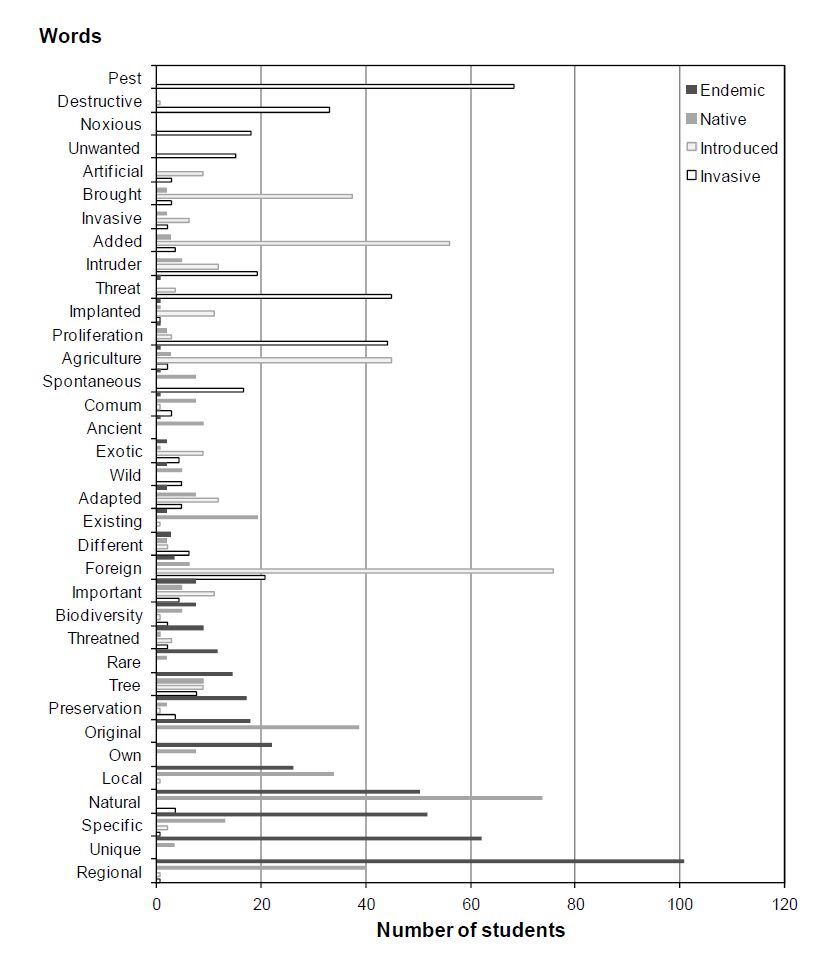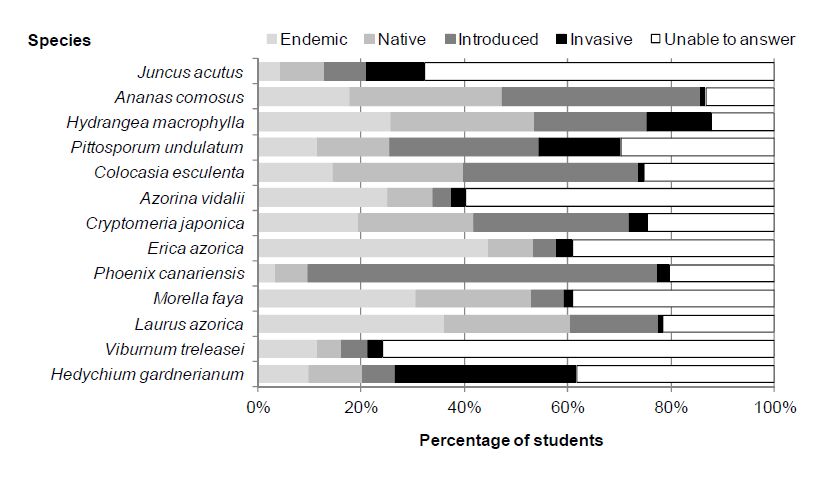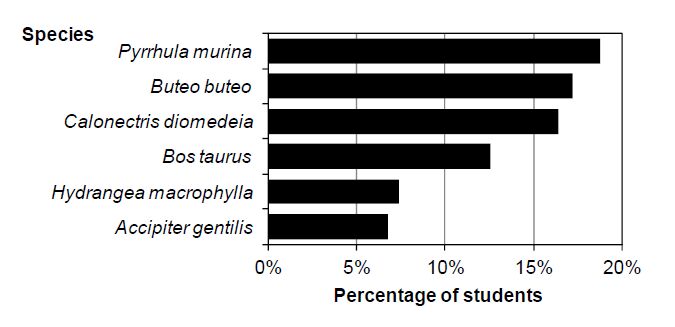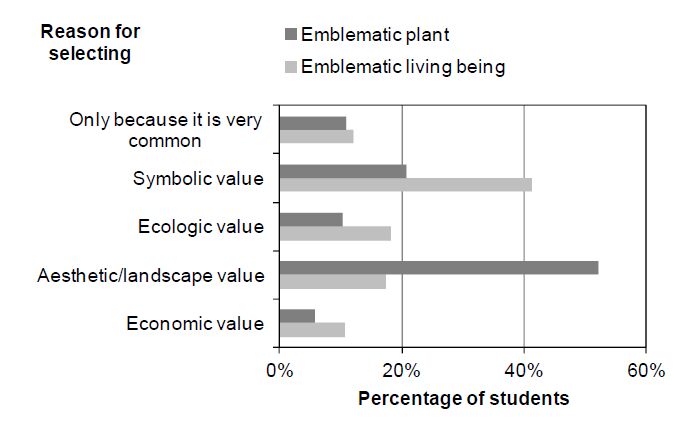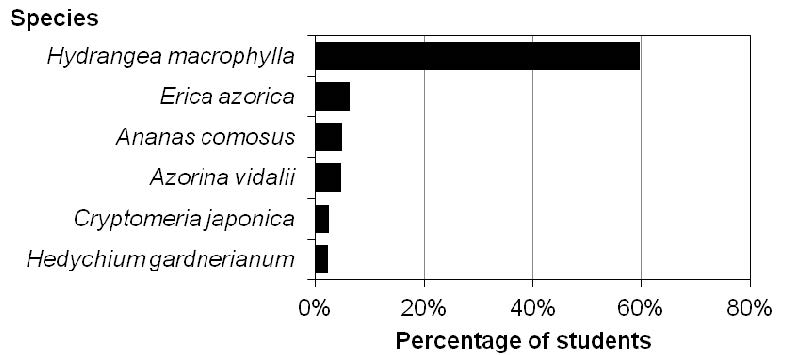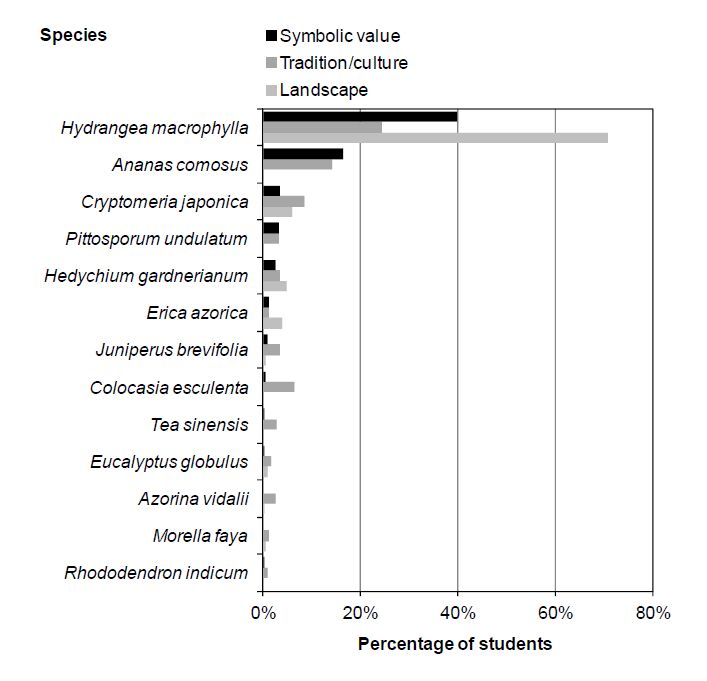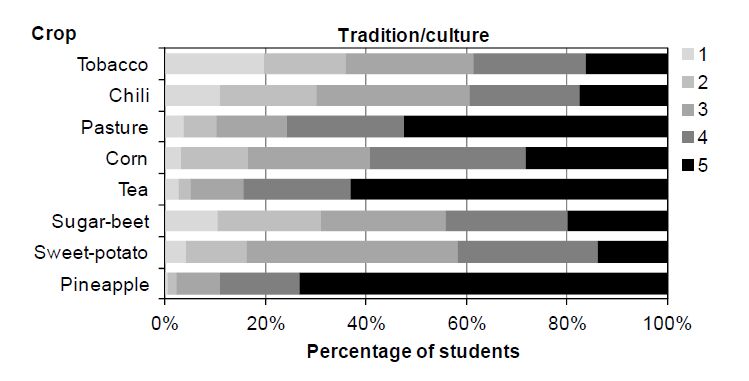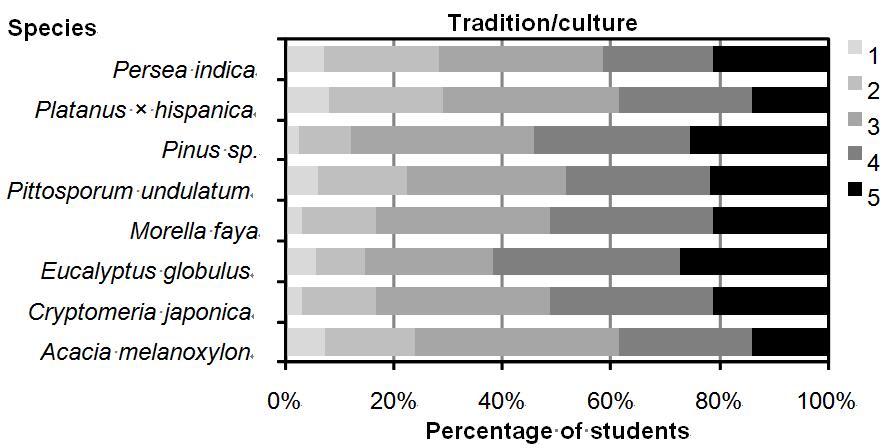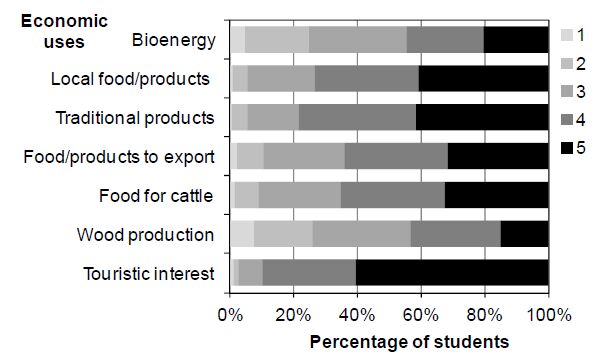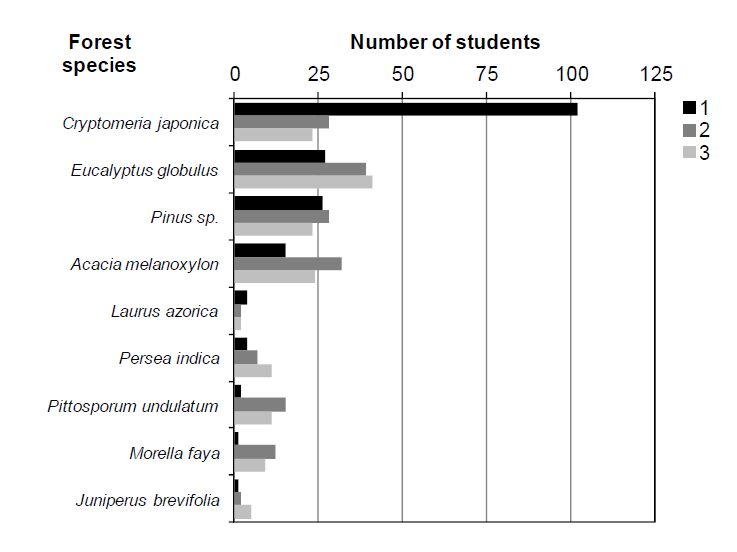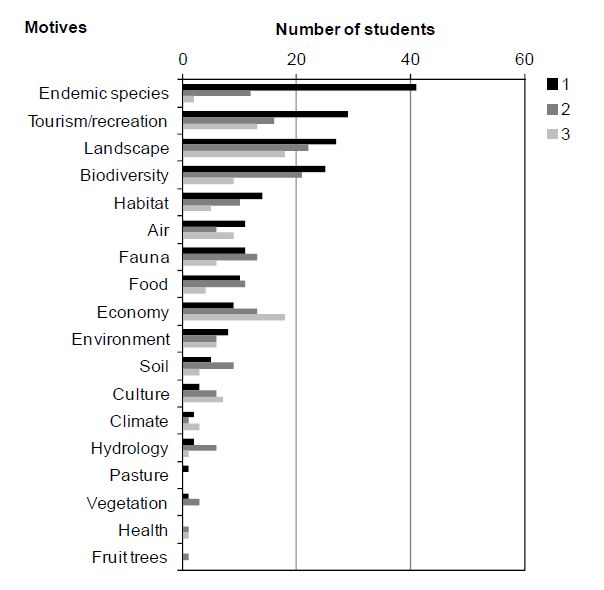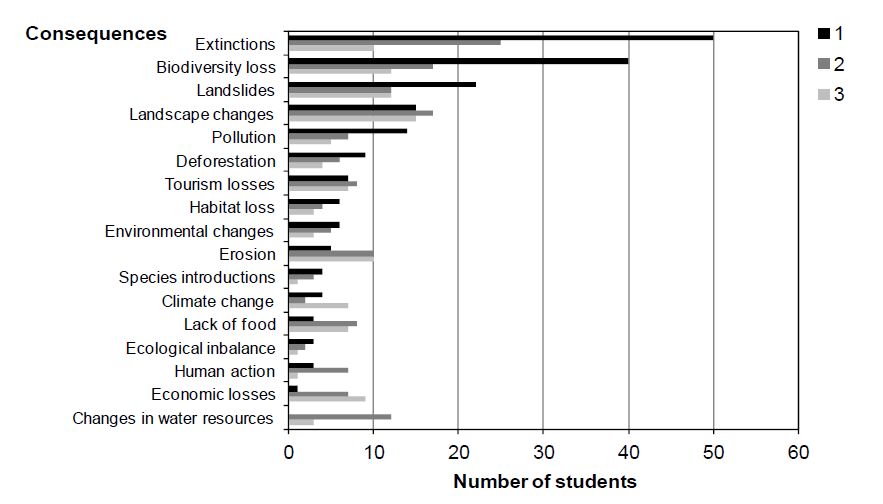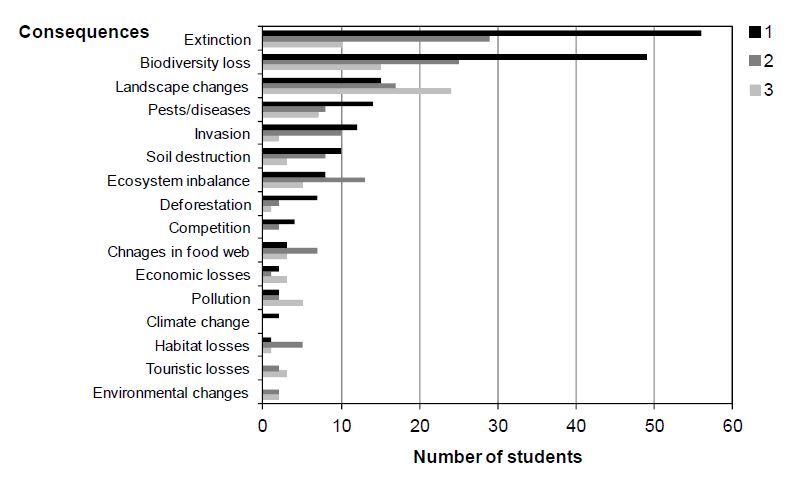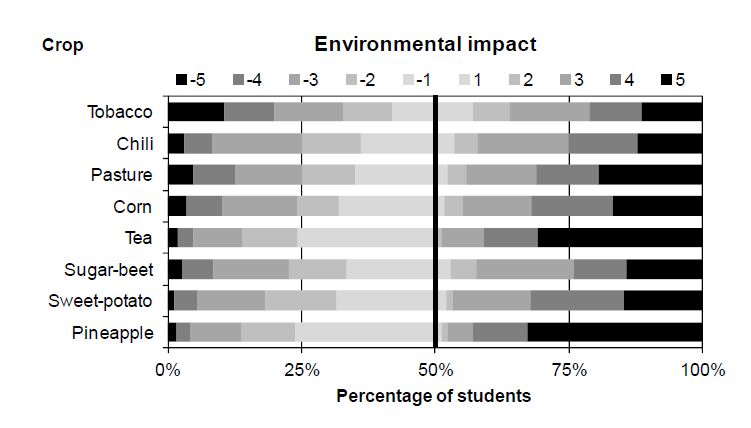1. Introduction
The Azores Archipelago was discovered by Diogo de Silves in the fifteenth century and the Portuguese started island settlement in the middle of that century [1]. The Azores are often grouped with Cape Verde, Canary Islands, Madeira and Savage Islands, forming a biogeographic region known as Macaronesia [2]. Of volcanic origin, the Azores consist of nine islands located in the North Atlantic Ocean in a WNW-ESE axis between 37-40º N and 25-31º W, standing at the northern end of Macaronesia [3], with a western group of two islands (Flores and Corvo), a central group of five islands (Faial, São Jorge, Graciosa, Pico and Terceira) and an eastern group of two islands (São Miguel and Santa Maria), and a total population slightly below 250,000 inhabitants. The archipelago covers a total area of 2,346 km2 with island ages ranging from 0.27 to 6.3 million years [4,5]. It is spread over 615 km and is located about 1,500 km west of mainland Portugal, 3,600 km east of North America and 800 km northwest of Madeira. Pico has the highest elevation of the archipelago, with approximately 2,350 m and Graciosa the lowest (402 m). With regard to climatic conditions, the average annual temperature is 17 °C and, for every 100 m rise above sea level, there is a reduction of about 0.6 °C. Regarding precipitation, it increases with increasing elevation and from East to West, reaching 3,000 mm per year. The climate in the Azores ranges from sub humid mesothermal to wet microthermal, and to taiga in Pico [6,7].
When compared with the neighbouring archipelagos of Macaronesia, the terrestrial flora of the Azores is characterized by an endemism rate of only 7%, contrasting with the 20% to Madeira and 30% for the Canaries, and a larger number of native species [8]. However, as in many oceanic islands, little diversity is not equivalent to a low interest from the point of view of conservation, as a set of unique species and habitats occurs in the Azores [3,9]. Of the circa 200 indigenous plants only 3.9% were evaluated [3], and only eight species were considered as endangered following International Union for Conservation of Nature (IUCN) criteria. However, the number of indigenous plants under threat continues to rise and is now about 90, i.e. 50% more than two decades ago [10].
The natural forest is dominated by trees with broad, persistent, coriaceous leaves [11]. Near the coast, it is mainly composed of Picconia azorica (Tutin) Knöbl. (Oleaceae) and Morella faya (Aiton) Wilbur (Myricaceae). The thermophilic forest also includes Laurus azorica (Seub.) Franco (Lauraceae), Prunus lusitanica L. ssp. azorica (Mouillef.) Franco (Rosaceae), Viburnum treleasei Gand. (Adoxaceae) and Frangula azorica V. Grubov (Ramnaceae). The cloud forest is mainly characterized by the presence of Ilex azorica Gand. (Aquifoliaceae), and by the large areas dominated by Juniperus brevifolia Ant. (Cupressaceae). Prior to the fifteenth century, the water cycle fed and was regulated by the dense natural forests, which prevented the torrential erosion of the islands, also disturbed cyclically by seismic and volcanic phenomena [12]. Also known as cloud forest, natural forest is a relic whose origins date back to the rainforests of the Tertiary that retreated during the last glaciations and remained only in Macaronesia, the Mediterranean and north-western Africa [13]. The natural forest of the Azores differs from those found in Madeira and the Canary Islands, because it includes a single species of Lauraceae, although it includes several species of trees and sclerophyllous and microphyllous shrubs and lush bryophytes communities, covering all available substrates [14]. Based on vegetation studies, J. brevifolia could be the plant that best symbolizes the Azores, since it is dominant or co-dominant in various types of natural communities [15,16], with a distribution from the sea level almost to the top of Pico Mountain, particularly in forests located above 500 m, which have great importance in fog interception, in soil stabilization, and are important sources of native biodiversity, with an indirect economic value due to their high aesthetic and recreational interest [17]. Especially important are Sphagnum spp., and other bryophytes, constituting water reservoir bogs, responsible for the regular feeding of the suspended aquifers of the islands, and of the more persistent water lines [18]. Nowadays, those forests are extremely fragmented due to the establishment of pastures and are threatened by the proliferation of introduced plants [19]. The areas of native forest in the Azores cover less than 10% of the total area [14], and are virtually absent in some islands (e.g. Graciosa and Corvo). They house more than 50% of the species considered as priority (based on their rarity, taxonomic uniqueness and ecological role), but appear relatively intact only at high elevation in Terceira, Pico and Flores [9]. Other rare types of natural vegetation include native meadows (coastal and inland) and coastal vegetation, where several endemic plants occur in lava flows and in boulder beaches [20].
Since the beginning of human settlement in the fifteenth century, the natural vegetation of the Azores has undergone a gradual change in terms of its composition and structure, due to the introduction of numerous species and as a result of human activities [21]. Today, about 70% of the approximately 1,000 vascular plants, which make up the Azorean flora, have been intentionally or accidentally introduced [19,22,23]. In the Azores the number of exotic species per km2 ranges from one to two times the number of native species, depending on the island, which is more than in any other archipelago of Macaronesia [21]. The number of plant taxa increased by nearly 100% over the last 150 years [20], with introduced plants affecting the composition of plant communities at all elevations and in different biotopes. The percentage of introduced plants increased from 57% in 1897 [24] to 62% in 1966 [25] and to 69% in 2004, a total of 1002 [22], which is about 205 introduced species for 10 km2. The first listing of invasive species more threatening to the natural communities of the Macaronesian archipelagos [22], included Hydrangea macrophylla (Thunb.) Ser. (Hydrangeaceae), Pittosporum undulatum Vent. (Pittosporaceae) and Arundo donax L. (Poaceae).
Economic growth in the Azores in recent decades is linked with the achievement of political autonomy and the adhesion of Portugal to the European Union, which stimulated the growth of economic sectors such as dairy cattle farming, with a total usable agricultural area corresponding to about 50% of the land surface, fishing and fish processing, and tourism [26,27,28]. Below 300 m, the level traditionally associated with arable land in the Azores [29], several crops occur, predominantly corn, Zea mays L. (Poaceae), for cattle fodder and to a lesser extent, sugar-beet, Beta vulgaris L. (Chenopodiaceae), pineapple, Ananas comosus (L.) Merr. (Bromeliaceae), banana, Musa acuminata Colla (Musaceae), orange, Citrus sinensis (L.) Osbeck (Rutaceae), potato, Solanum tuberosum L. (Solanaceae), sweet-potato, Ipomoea batatas (L.) Lam. (Convolvulaceae), tobacco, Nicotiana tabacum L. (Solanaceae), tea, Camellia sinensis (L.) Kuntze (Theaceae) and chili, Capsicum spp. (Solanaceae). Wine production, Vitis vinifera and V. labrusca L. (Vitaceae), represents 0.4% of the regional agricultural production in terms of income. There are three specific regions, Pico, Terceira and Graciosa, with particular emphasis on the Protected Landscape of Regional Interest for Culture of the Vineyard of Pico, classified at the regional level in 1996 and designated as a UNESCO World Heritage Site in July 2004 [30].
Above 300 m the agro-silvicultural possibilities are restricted to pasture and fodder or production forest. Some crops, such as sugar-beet, are still possible but above 300 m the quality of production as raw material for industry is very low. The emigration of many Azoreans to America between the 1940s and 1960s led to a decrease of the active population [31], but also to the development of production technology, processing and distribution of dairy products, which has favoured economic activities with less hand labour needs (i.e. milk powder and butter). Therefore, there was a major investment in monocultures, both in agriculture (pastureland) and in forest, with the dominant use of cryptomeria, Cryptomeria japonica (L. fil.) D. Don (Taxodiaceae). In recent decades, as a result of community policies and their financial support, there has been an increase in forestation and reforestation, both now subject to management plans that ensure good forest practices [32]. Production forest occupies 35% of the total area of forest on the islands, clearly dominated by C. japonica (12,500 hectares, representing about 60% of the regional forest, 85% in São Miguel). Other species, with an important position in some of the islands include Eucalyptus globulus Labill. (Myrtaceae) in Terceira, Acacia melanoxylon R. Br. (Fabaceae) and Pinus pinaster Aiton (Pinaceae) in Pico [32,33]. The Azorean forest is menaced by invasive species, namely Hedychium gardnerianum Sheppard ex Ker-Gawl. (Zingiberaceae), Gunnera tinctoria (Molina) Mirbel (Gunneracea) and P. undulatum [21].
Today, the islands have new ecosystems created by human activities, namely the Azorean pastures which correspond to different types [34]: (i) artificial pasture of Bromus spp. (Poaceae) and Lolium spp. (Poaceae) with low to high intensification; (ii) artificial pasture of Holcus lanatus L. (Poaceae) at high elevation and low intensification; (iii) semi-natural pastures at high and low elevations.
Currently, all protected areas of the Azores are classified based on criteria set by the IUCN there being a Natural Park per island that includes five categories of protected areas: nature reserve, natural monument, area for habitat or species management, protected landscape, and area for resource management [19].
Although the Portuguese show favourable attitudes towards the environment, the representation of their knowledge tends to be limited [35]. Thus, the transmission of information about biodiversity is an urgent task to allow a greater understanding and appreciation for the services performed by natural and modified ecosystems, either direct (e.g. drinking water, food production, carbon sequestration, soil protection), or indirect (e.g. rainfall and temperature regulation), and also facilitating the exercise of our responsibility, individually and collectively, on the conservation of populations, species and ecosystems that share our space and time [35]. Another line of thought advocates the conservation of biodiversity for its economic and ecological importance, its recreational or aesthetic potential and a moral imperative. Obviously, there are contact points between the valuation of biodiversity for its direct use and economic aspects, and also between indirect use and ecological aspects [36]. For example, the essentially aesthetic value that is recognized to certain emblematic species, engages people in their preservation without ever observing them in nature.
Studies regarding how human populations perceive changes in the biosphere and their role in preventing those changes, largely based on the application of structured questionnaires, have been widely used, addressing: particular animal or plant species, invasive species, the preservation of biodiversity, natural and planted forest diversity and ecosystem services, the importance of peri-urban green areas [37,38,39,40,41,42,43,44,45], among many other subjects. For instance, a questionnaire was used to study climate change perception in the Azores, showing that the vast majority of the respondents had a very good understanding of the involved processes and threats [46]. Moreover, this type of evaluation is important in order to define measures that will change behaviour towards more biodiversity friendly activities, which still constitutes a challenge in a multidisciplinary conservation science [47].
Given the importance of the Azorean flora for the biodiversity, economy and well-being of the population, we considered that it would be important to start nurturing an understanding about how the Azoreans perceive the flora of the islands. Very important for the development of the Azores was the creation of the University of the Azores, allowing the formation and permanence in the archipelago, of highly qualified personnel [48,49,50]. Therefore, taking into account the crucial role of the future graduated students in the Azorean society, at different levels, we focused this research on the students from the University of the Azores. This work aims to study the perception of the students from the University of the Azores regarding the flora of the region, namely how they understand the concepts of endemic, native, introduced and invasive species; what species are considered more emblematic; the level of students' knowledge of the main agricultural crops and forest species; their perception regarding the importance of the flora for biodiversity and the economy. The rationale of the study relies on the importance of the perception of the Azorean flora by the students from the Azores University, given the potential influence that the graduated students will have in making future decisions and guiding popular perceptions that will directly and indirectly affect the flora.
2. Methods
2.1. Concepts
Plant taxa can be classified according to their colonization status [51,52]: (1) endemic taxa-species or subspecies that only occur in a given location, as a result of speciation events or extinction of continental populations. It can be caused by isolation mechanisms, flooding, movement of tectonic plates, among others; (2) native taxa-species that colonized a certain place by dispersion over long distances and also occur in other archipelagos and/or continents; (3) introduced taxa-species that occur in a particular region as a result of human activity, which may or may not be harmful to the ecosystem where they were introduced; (4) invasive taxa-introduced species that outcompete native species, and that in extreme cases modify the ecosystem, leading to local extinctions.
2.2. Target population and sample
The present work aims to study the perception about the Azorean flora in students from the University of the Azores of bachelor degree (a total of about 3000). The sample was accessed by contacting the coordinators of several courses in different scientific areas, and then applying the questionnaire in the classroom after a short presentation of the aims of the study, in November 2013. The following courses participated in the study: biology, environment, medicine, nursing, agriculture, civil protection and risk, economics, management, education, psychology, social service, and sociology.
2.3. Questionnaire construction and application
Since a questionnaire addressing knowledge/perception of the flora or fauna of a region was not available, it was decided to build a new questionnaire, based on the available literature [35,37,38,39,40,41,42,43,44,45] and in 4 research questions and a total of 17 sub-questions. The questions have been mainly prepared in nominal (e.g. gender of the student) and multinomial or categorical (e.g.“Conteira”—Hedychium gardnerianum—is endemic, native, introduced or invasive?) scales. However, several items were built as ordinal variables. This was used to ask students the degree of importance (1, less important to 5, more important) of the target species or crops to biodiversity conservation, the economy, etc. Open items were also included to allow students greater freedom of response. The questionnaire includes a total of 36 items grouped into 4 main groups (Supplementary Material): (a) What concept do students have on the origin of the Azorean flora (endemic, native, introduced and invasive)? (b) What is the perception of the students about the importance of the flora for identity, tradition and Azorean culture? (c) What is the perception of the students regarding the economic importance of the flora? (d) What is the students' perception of the importance of the flora for the preservation of biodiversity and the environment? Each research question was subdivided into sub-questions which were used as the framework for building the questionnaire (Supplementary Material). A range of common plant species belonging to the different categories (i.e. endemic to invasive), and crop and forest species were used to built questions with pre-prepared lists of species. Only common names considered and as familiar to local people, including those without tertiary education, were used. The questionnaire was applied in paper format with the researcher present, which briefly presented the objectives of the study.
2.4. Data analysis
The results were introduced in a spreadsheet (Microsoft Office Excel 2003) and later analyzed, using IBM SPSS software v. 21.0 (Statistical Package for the Social Sciences). Since the questionnaire items corresponded, in general, to nominal and ordinal variables, we primarily used the analysis of frequency distributions by preparing graphics and tables.
3. Results
3.1. Sample characterization
The sample comprised a total of 309 students whose average age was 22.2 years (sd= 5.52), ranging 17-47 and a mode of 19 years. Of the sample, 66.7% (206 students) were female, 88.7% (274 students) were natural from the Azores, followed by Lisbon and Madeira, with 1.9% (6 students) and 1.6% (5 students). The remaining locations had a percentage equal to or less than 0.6% (2 students). Regarding residence, 98.4% (304 students), were resident in the Azores, with one student from Lisbon, representing 0.3%. The average admission grade across courses was 13.9 (sd = 1.71), ranging from 9.4 to 18.4 (in Portugal, student grades range from 0 to 20). Distribution by scientific area is given in Table 1. The distribution of students per academic year was relatively homogeneous (first 38.1%, second 30.3%, third 30.9%). The average grade of the students in the degree course they were attending at the University was 12.9 (sd = 1.76), ranging from 6.9 to 17.4.
Table 1. Distribution of a sample of 309 students from the University of the Azores according to the bachelor degree course they were attending in November 2013.
| Degree | Students (%) |
| Education | 22 |
| Health | 22 |
| Management/Economics | 16 |
| Biology/Environment | 13 |
| Geology | 11 |
| Agriculture | 8 |
| Psychology/Sociology | 8 |
The large majority of the respondents were students at full-time (89.6%, 277 students). The remaining had jobs ranging from accountant (1.6%, 5 students), seller (1.0%, 3 students), home helper, operations assistant, entrepreneur, receptionist and clerk (0.6%, 2 students each) and finally, administrative, merchant, commercial officer, agricultural entrepreneur, farmer, municipal police agent, music teacher, security supervisor, IA technician and GIS technician (0.3%, 1 student each).
Regarding sources of information about the flora, it was observed that the most frequent was the internet (20.7%), television (16.8%) and books (11.3%). Other sources included: newspapers (8.1%), school (3.9%), and magazines (3.9%). Of the 195 replies, i.e. those who would like to receive more information about the flora of the Azores, 41% (80 students) believe that the most effective way would be the internet, followed by the organization of lectures, 6% (12 students); also, 6% (11 students) considered television or guided tours as the most suitable way for obtaining further information in this area.
3.2. Students’ perceptions about the origin of the Azorean flora
When asked to express several concepts in their own words (endemic, native, introduced and invasive; open-ended question), regarding the concept of endemic, the most frequent terms were regional, unique, specific and natural (Figure 1, open-ended question). As for the concept of native, the most frequent terms were natural, regional and original. On the concept of introduced, the words that appeared most often were foreign, added, agriculture and brought. With regard to the concept of invasive, the most common terms for its characterization were pest, threat and proliferation (Figure 1).
When asked to classify several species from the Azorean flora, regarding their origin (question with terms supplied by the researchers), the majority of the students considered the flora of the Azores primarily made up of endemic (41.7%) or (20%) native species, 17.5% by introduced species, 14% by invasive species, and 7% by endangered species.
A third of the sample considered H. gardnerianum as invasive while approximately the same number did not know how to answer (Figure 2, question with terms supplied by the researchers). With regard to V. treleasei, Juncus acutus L. (Juncaceae), and Azorina vidalii (H. C. Watson) Feer (Campanulaceae) most students do not know these species. However, most students classified L. azorica and M. faya as endemic.
The palm, Phoenix canariensis Hort. & Chabaud (Arecaceae), was mostly considered as introduced. With regard to C. japonica, approximately 20% of the students considered it as an endemic or native species.
Of those surveyed, 45% considered E. azorica as an endemic species, while about 40% of students did not know how to answer. About 40% considered yam, Colocasia esculenta (L.) Schott (Araceae), and pineapple as endemic or native, and more than 50% of the students considered hydrangea as native.
Students are of the opinion that the most emblematic species in the Azores archipelago are birds (Figure 3, open-ended question.), namely Azores bullfinch, Pyrrhula murina Godman, 1866, common buzzard, Buteo buteo rothschildi Swann, 1919, and Cory's shearwater, Calonectris borealis (Cory, 1881).
Fewer students suggested cows (Bos taurus L.), hydrangea and another bird, northern goshawk, Accipiter gentilis (Linnaeus, 1758). The latter gave the name to the archipelago but is not presently nesting in the Azores, and was probably mistaken with B. buteo rothschildi by the navigators. The reason for that choice was mostly their symbolic value (Figure 4, question with terms supplied by the researchers).
The most emblematic plant species was largely considered to be hydrangea (Figure 5; open-ended question), although the reason for the choice was mostly related to its aesthetic or landscape value (Figure 4). Concerning symbolism and tradition/culture, most students mentioned hydrangea or pineapple, and regarding landscape the former dominated even more (Figure 6; open-ended question). For students the more important crops with regard to tradition/culture were pineapple, tea and pasture, whilst tobacco was considered as the least important (Figure 7; crop names supplied by the researchers).
The students saw as most important forest species, with regard to tradition/culture, C. japonica, eucalyptus, pine and acacia (Figure 8; common names supplied by the researchers), although there was very little variation between forest species.
3.3. Students’ perception regarding the economic importance of the flora
For the respondents, the flora is important, particularly for its interest to tourists (Figure 9; terms supplied by the researchers). Interestingly, wood production obtained the lowest scores.
The crops that the students suggested as primary, in economic terms, were pineapple, pasture, tea and corn (Figure 10; open-ended question). When the students were given a list of crops, the results were similar. The forest species considered most important for the economy were C. japonica, eucalyptus and pine (Figure 11; open-ended question). When the students were given a list of forest species, the results were similar.
3.4. Students’ perception on the importance of flora for the preservation of biodiversity
According to the students, the role of the flora included the preservation of endemic species, the possibility of developing activities related to tourism and recreation, its connection to the preservation of landscape, and to the preservation of biodiversity (Figure 12; open-ended question). In what concerns the possible consequences of changes in land cover, the most cited responses were extinction, biodiversity loss and land-slides (Figure 13, open-ended question).
Among the possible consequences of the introduction, growth or uncontrolled spread of some plants, suggested by the students stand out extinction, loss of biodiversity and changes in the landscape (Figure 14; open-ended question).
Agricultural crops considered to have the largest positive environmental impact, were pineapple and tea (Figure 15; crop names supplied by the researchers). Regarding negative impacts, the scores were much lower for all the crops (Figure 15; crop names supplied by the researchers).
There was no clear difference in terms of positive environmental impact attributed to the different forest species, although with a slight preference for C. japonica, eucalyptus and pine (Figure 16; common names supplied by the researchers). Negative impacts received very low scores (Figure 16; common names supplied by the researchers).
4. Discussion
4.1. Student sample
As expected for the Azores University, two thirds of the respondents were female, and were in average 22 years old, born in the Azores [53]. The admission grade varies considerably with the course, since in Portugal students that enter medicine are required to have very high admission grades when compared with other areas such as biology [54]. They are generally students at full time and stated that the information they possess on the subject under study, comes from the internet, television and books. In fact, these three media are the most widely used for information search on any subject [55]. In addition, students also mentioned the organization of lectures and guided tours which are often familiar to their academic activities.
4.2. The origin of the Azorean flora
Students do not completely distinguish the concepts of endemic and native, however, they manage to distinguish the concepts of introduced and invasive species. Respondents considered that the Azorean flora mainly consists of endemic species, a perception that in not close to reality. As previously stated, roughly 2/3 of the species of the Azorean flora are introduced. In a brief analysis of the results, it can be seen that the students, in general, do not know the origin of the species, perceiving as native many introduced species.
Hedychium gardnerianum was the only species correctly identified as invasive. First introduced in the Azores as an ornamental plant in the nineteenth century [21], it is one of the most important threats to natural forests, habitats and species [23]. Also, the palm tree, cryptomeria, yams, sweet pittosporum and pineapple were all correctly recognized as introduced species [51,56]. However, cryptomeria, was also referred to by students as being endemic or native. Similarly, the yam was also considered by some students as native, possibly because it is an old introduction and a very common plant in wet areas. Sweet pittosporum however, was not commonly recognised as an invasive plant, although being in the top [21,33]. A possible explanation is that it is commonly used for hedgerows, the production of honey, and as compost for pineapple cultivation [57,58].
Hydrangea and pineapple were also incorrectly considered as native by some respondents, being some of the most familiar plants to the Azoreans. Some students showed difficulties in discerning between endemic and native species. In fact, some respondents mentioned the endemic L. azorica, and the native M. faya as endemic. Meanwhile, Erica azorica was correctly considered as endemic by some of the respondents.
The students generally didn’t know Juncus, Azorina and Viburnum. It could be hypothesized that the students didn’t know the plant names but could eventually recognize them in the field. However, we consider that the lack of knowledge of a common local name makes that possibility very unlikely. Juncus acutus is a native species from coastal areas [59], with a significant interest for resident and migratory birds. Azorina vidaliiis endemic and can be found in coastal areas [3]. Although it gave the name to a public entity working in environmental issues, this apparently didn’t contribute to a better knowledge about this species among the participant students. Viburnum treleasei, also an endemic species, was recently included in the ninety Azorean native vascular plants considered priority in conservation [3].
The fact that students were not able to accurately identify the origin of relatively common species reveals a lack of knowledge about biodiversity and the surrounding flora. Considering that many of them may play a leading role as technical or entrepreneurs in the region, it is imperative that they acquire an integrated vision on local biodiversity. Lack of knowledge can lead to the destruction of endemic/native species and to the introduction of potentially invasive plants. The latter are widely recognized as a major threat to native biodiversity, particularly in islands [60], which can lead to increased similarity in composition between originally different areas, i.e. lead to a biotic homogenization [61]. In a study devoted to younger children, it was found that the knowledge of children and their consideration to protect animal species are mainly limited to internet contents, represented by a few exotic and charismatic species [62]; the identification rate of local animals by schoolchildren was meagre, suggesting a worrying disconnection from their local environment; they were more prone to protect “virtual” (unseen, exotic) rather than local animal species. This disconnection was also found in our study, although at a relatively lower scale. In our study, however, despite the respondents failed to connect the concepts to plants in particular, they showed to have a concept of the term itself, and generally attributed the correct meaning to terms endemic, native, introduced and invasive.
4.3. What is the perception of the students about the importance of flora for identity, tradition and Azorean culture?
Hydrangea has been one of the tourist icons of the Azores, which is in agreement with the opinion of most respondents that choose it primarily for its aesthetic/landscape value. This is in agreement with previous results showing that the perception of invasive alien plant species may be affected by aesthetical factors [42]. Hydrangea is, however, an invasive species, with a very significant impact, constituting a risk for various fragments of native vegetation [21,63]. Nevertheless, the results obtained for the association of plant species with the words landscape, tradition/culture and symbolism, largely indicated hydrangea.
Some endemic species have been promoted as an alternative to the introduced species used for ornamental purposes, but with a reduced adhesion from stakeholders (e.g. plant nurseries, public entities using plant species for landscaping) and requiring extreme care to avoid negative impacts on endemic species (e.g. depletion of natural populations through collection of plants and seeds, changes in population genetic structure).
Pineapple, tea and pasture were considered as the more important in terms of tradition and culture. In fact, the Azores pineapple cultivation [64] is nowadays widely recognized nationally, as well as Azorean tea, being sold in large retailers. Moreover, most of the students reside in São Miguel, where both these crops are located. Regarding pasture, as stated above, it presently occupies more than 60% of the islands surface, and the two islands with larger milk production are also those where more students reside (i.e. Terceira and São Miguel). Similarly, when asked about the main forest species in terms of tradition and culture, respondents indicated cryptomeria, eucalyptus and pine, which are in fact some of the most common forest species [32,33]. The importance of the primary sector in the Azores is reflected on its relatively high percentage on global gross value added (9.6%) compared to mainland Portugal (2.2%), and in the fact that all the major industries are agro-food and forestry processing [65].
The results indicated that P. murina was one of the living species considered most emblematic of the Azores, for its symbolic value. In fact, according to the SPEA (Portuguese Society for the Study of Birds), it is considered as an emblematic bird, endemic to São Miguel, and one of the rarest and most endangered birds in the world. Currently it occurs in a small area of cloud forest in the SPA Pico da Vara/Ribeira do Guilherme located in eastern São Miguel Island. Relatively abundant in the nineteenth century, it was considered as a pest for agriculture [66]. Other cited animals include C. diomedeia, which has been targeted with a public campaign named SOS Cagarro, for more than 20 years [67], and B. buteo, which is conspicuously represented in the Regions’ symbols, namely the Azorean flag [68].
4.4. What is the perception of the students regarding the economic importance of the flora?
The respondents mostly valued tourism and food production, while the productions of wood and of animal fodder were considered as less important. The abundance and diversity of plants are important natural attributes for outdoor recreational activities such as hiking and camping activities that are associated with tourism [17]. Students considered pineapple, pasture and tea as the most important agricultural crops. This overvaluation attributed to pineapple may be due to its touristic or traditional interest (see above). In reality, pasture and forests have an outstanding value in the Azores economy, since wood is used in building and as fuel, while animal fodder is the basis of dairy and meat farming [32,65].
4.5. What is the students’ perception of the importance of flora for the preservation of biodiversity?
The students recognised the importance of the flora mainly for the preservation of endemic species and biodiversity, and for tourism and recreation. As found in similar studies [41], students tended to place more importance on regulating and supporting ecosystems services (e.g. endemic species, biodiversity, landscape, habitat, air) than on provisioning services (e.g. tourism, food). This largely agreed with the possible consequences that, according to the students, could arrive from changes in plant cover. In fact, those changes might entail a cascade of negative consequences at global level [69]. Similar results were obtained for the consequences resulting from the uncontrolled introduction, growth and spread of plant species. Biological invasions can lead to manifold impacts [21,60], although this is might not be readily recognized by uninformed citizens, particularly those unable to recognize invasive species [42].
It should be mentioned that the level of negative impact attributed to crops by students was always low. Regarding pineapple, while in the past the collection of substrate that was used to install the crop inside greenhouses, in the natural habitats has a negative impact, presently that situation was reversed [64]. According to the respondents, pastureland could originate both positive and negative impacts. As mentioned, pastures have a positive impact in economic terms, supporting an animal load sometimes above 250,000 heads [65]. However, in environmental terms, pastureland can be detrimental since it replaced natural plant communities. The degree of plant community change associated with human disturbance has been investigated, showing a significant increase of introduced elements on increasingly altered habitats, such as permanent pastures [52]. Furthermore, agricultural activities tend to degrade water quality through chemical contamination. The eutrophication of lakes, associated with the use of fertilizers, greatly affects the quality of ecosystems [70], and is frequently discussed in the media in the Azores.
According to the respondents, forest species that have a positive environmental impact are cryptomeria, pine and eucalyptus while differences among species regarding their negative impact were negligible. Also, the attributed positive effect was higher than the negative effect. This is in agreement with the fact that those species are the most important for production forest in the Azores [33]. However, the number of endemic and native species is lower in production forest and in exotic woodland than in natural forests [52]. While being an important species for the paper industry, eucalyptus spread in mainland Portugal has been documented and is publicly discussed [71]. However, this was not reflected in the responses of our student sample. Regarding sweet pittosporum, although its negative impact was not recognised, it is one of the most important plant invaders in the Azores [33].
5. Conclusion
This study suggests that there is some degree of disconnection between the flora as perceived by the students and the scientific data describing the flora and vegetation in the Azores. Most likely, the initiatives undertaken so far to increase knowledge about biodiversity were only successful for some of the most emblematic animal species, such as P. murina and C. diomedeia, as been shown above. For example, to increase awareness of the local population, the Azores Environmental Services, in conjunction with schools and NGOs, have developed several campaigns related to the impacts of invasive plants on the islands and therefore the need for their control. After the recent implementation of the regional network of protected areas, about 500,000€ are spent annually with these activities [19]. As stated above, a disconnection from their local environment, might lead Azoreans not to dedicate attention or resources to the conservation of their local biodiversity [62]. Moreover, leadership plays a crucial role in creating more balanced and sustainable regional development [72] therefore the graduated students from the University of the Azores will have the potential to directly intervene in the development of the region, namely in what regards environmental issues.
Considering the importance of the Azorean flora and vegetation for the ecological sustainability of the islands, and for the Azorean economy, as well as the potential role of the graduates from the University of the Azores in the socio-economic development of the region, more effort and new strategies will have to be implemented in to increase biodiversity awareness in the population as a whole. Nevertheless, with a considerable responsibility in the training of the future human resources in the Azores, the University of the Azores should consider the possibility of including biodiversity related topics as transversal in different learning areas, and not only in those directly related with biology or the environment.
Acknowledgments
We are grateful to all the colleagues from the University of the Azores, who helped to organize the application of the questionnaire, namely those from the following departments: Biology, including the Medicine coordination; Geosciences; Economy and Management; Educational Sciences, including the Psychology coordination; Nursing School; History, Philosophy and Sociology. We thank three anonymous reviewers for their helpful comments and suggestions. This work was funded by FEDER funds through the Operational Programme for Competitiveness Factors - COMPETE and by National Funds through FCT - Foundation for Science and Technology under the UID/BIA/50027/2013 and POCI-01-0145-FEDER-006821. We also thank Azorean Government funding through project DRCT-M1.1.a/005/Funcionamento-C-/2016 (CIBIO-A).
Conflict of interest
None declared.









 DownLoad:
DownLoad: 